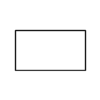Grötzsch's theorem (function theory)
In function theory , a branch of mathematics , various interrelated theorems are referred to as Grötzsch's theorem, including the following theorem on quasi-conformal mappings , which is considered the predecessor of Teichmüller's theory . It comes from Herbert Grötzsch .
Quasi-conformal images
Conforming images are angle-preserving images; Self-mappings of the (complex) plane are conform if they are biholomorphic .
Quasi- conforming images generalize conforming images , their deviation from conformity is measured by the dilation , whereby exactly applies to the conforming images.
Grötzsch's theorem considers all quasi-conformal mappings that map a given rectangle onto another given rectangle (with a given assignment of corners) and finds the quasi-conformal mapping of minimal dilation among these. It is thus a predecessor of Teichmüller's theorem , which solves the analogous problem for Riemann surfaces .
Grötzsch's theorem
For a pair of rectangles (with a fixed assignment of the corners) there is a unique affine mapping that maps the first to the second rectangle (with the given assignment of corners). Grötzsch's theorem states that this affine mapping is the mapping of minimal dilatation among all the first (with corner assignment) mapping quasi-conformal maps onto the second rectangle.
literature
- H. Grötzsch, "About the distortion in a simple conformal mapping of multiply connected areas" I, II Ber. Relative to Saxon. Akad. Wiss. Leipzig. Math natural sciences Kl., 81 (1929) pp. 38-47, 217-221
Web links
- Encyclopedia of Math: Grötzsch theorem with more than set of Grötzsch designated sets of complex analysis


